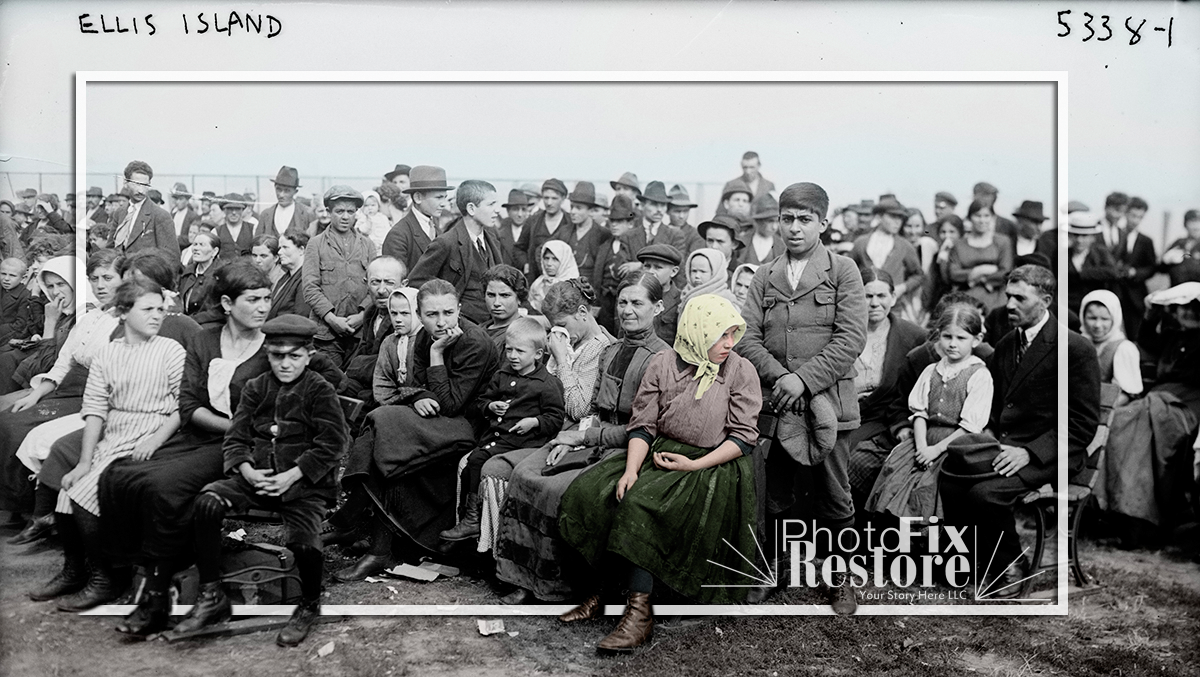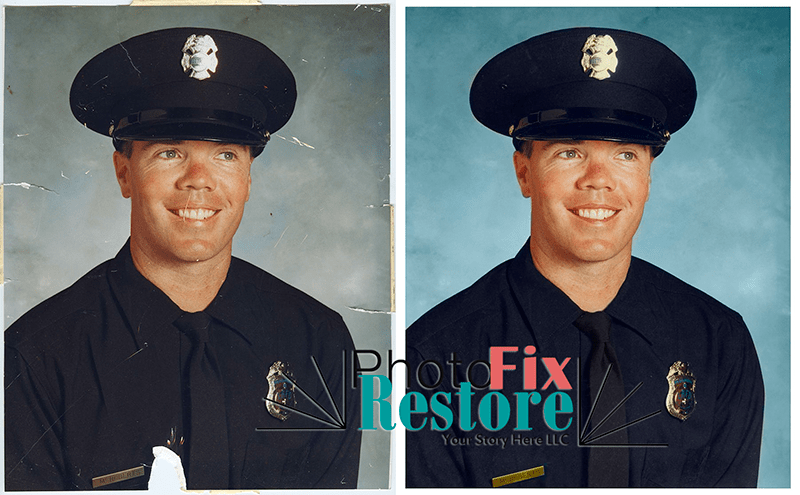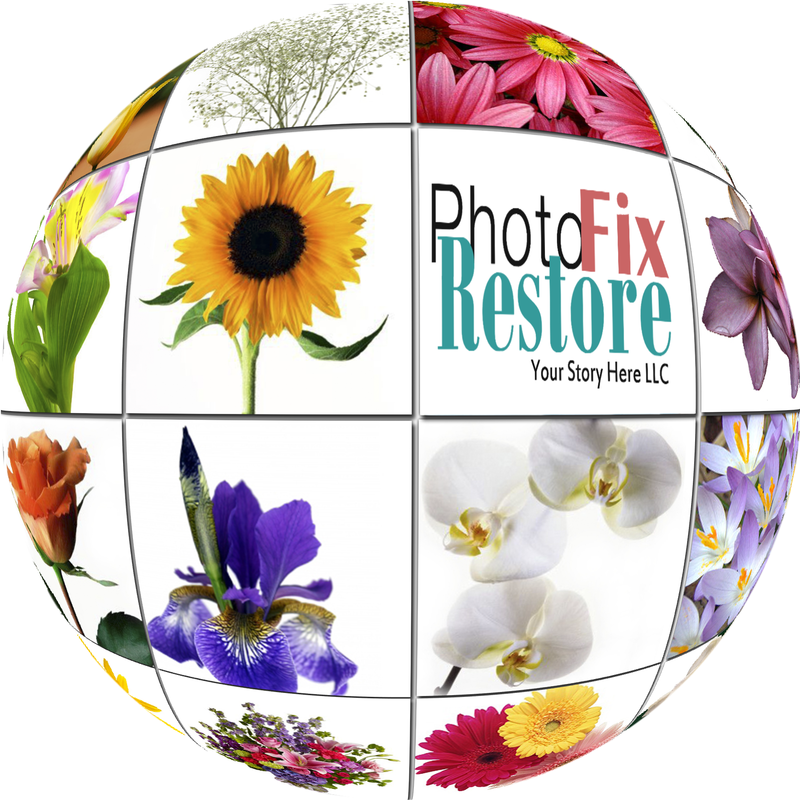Our relationship to our personal photographs is a lot richer than it is with other aesthetic objects such as painted or drawn art. Photographs have aesthetic, historic, emotional, familial as well as fulfillment dimensions - to name just some. So it pays to preserve, display and celebrate our treasured images; and if they need repair or enhancement, to restore or refurbish them also.
One of the things we have learned in the many years we have been fixing old photos is that photos are multi-dimensional. They satisfy our emotional, intellectual and spiritual needs in unique ways. Looking at someone else's photographs you are likely to lock on to the photo's aesthetics - its colors, structure, physical condition and subject matter: is it pleasing to the eye? If yes, a stranger to the image will be impressed. If no, they will look away. But for the owner of the image, aesthetics is important but really just the starting point.
One of the things we have learned in the many years we have been fixing old photos is that photos are multi-dimensional. They satisfy our emotional, intellectual and spiritual needs in unique ways. Looking at someone else's photographs you are likely to lock on to the photo's aesthetics - its colors, structure, physical condition and subject matter: is it pleasing to the eye? If yes, a stranger to the image will be impressed. If no, they will look away. But for the owner of the image, aesthetics is important but really just the starting point.
Our personal photographs are a moment in time, significant to us, frozen for eternity. They are a true form of time travel. What is a photograph if not a privileged glimpse through a small square window into another time and another place? And prior to the video age they were the only form of time travel. Regardless of how well the elements of an image are arranged, old photos have a historic dimension: they are the past still living and looking unblinking back at us.
And our own photographs have a unique emotional power. Who can look at a picture of a lost parent, their own wedding, a freshly born child, or a moment of sporting triumph and not be affected? We are connected to our personal photographs whether we like it or not. We own them but they also own us. Ever tried to cull that big pile of old family photos? Cull? Kill: That is how it feels to place a personal photograph into the trash. So we don't do it and resultingly we all have way too many photos piled up!
Many of our old photos also form part of an unofficial family history. Here is mother when she was just a girl; here is our brother when he turned 40. Neither of them are at the same place now but these photos are all the more important because our family members have moved on. Because we are the person we are - and we are also the sum of all the people we have been. Our personal photographs are a reminder of the people we have been.
Photographs are also an achievement and one that we take satisfaction and sometimes pride in - they fulfill us. You assembled all those people after Thanksgiving and now here they all are in your snapshot never to be reassembled in the same way every again. You did that; you made that. You felt the mood, you saw the chance, you appreciated the moment and you acted. In a busy world always worrying about the next thing, it takes energy to slow things down and record the moment. Very few of us are real photographers and too few of us take meaningful snapshots: congratulations and thank you to those who do!
We at PhotoFixRestore are in our 5th decade of a lifelong love affair with photos. And loving something, we are driven to take care of it; we are passionate about making old photographs everything that they can be. Whether it is our photos or yours we love photos - let us count the ways.
And our own photographs have a unique emotional power. Who can look at a picture of a lost parent, their own wedding, a freshly born child, or a moment of sporting triumph and not be affected? We are connected to our personal photographs whether we like it or not. We own them but they also own us. Ever tried to cull that big pile of old family photos? Cull? Kill: That is how it feels to place a personal photograph into the trash. So we don't do it and resultingly we all have way too many photos piled up!
Many of our old photos also form part of an unofficial family history. Here is mother when she was just a girl; here is our brother when he turned 40. Neither of them are at the same place now but these photos are all the more important because our family members have moved on. Because we are the person we are - and we are also the sum of all the people we have been. Our personal photographs are a reminder of the people we have been.
Photographs are also an achievement and one that we take satisfaction and sometimes pride in - they fulfill us. You assembled all those people after Thanksgiving and now here they all are in your snapshot never to be reassembled in the same way every again. You did that; you made that. You felt the mood, you saw the chance, you appreciated the moment and you acted. In a busy world always worrying about the next thing, it takes energy to slow things down and record the moment. Very few of us are real photographers and too few of us take meaningful snapshots: congratulations and thank you to those who do!
We at PhotoFixRestore are in our 5th decade of a lifelong love affair with photos. And loving something, we are driven to take care of it; we are passionate about making old photographs everything that they can be. Whether it is our photos or yours we love photos - let us count the ways.




